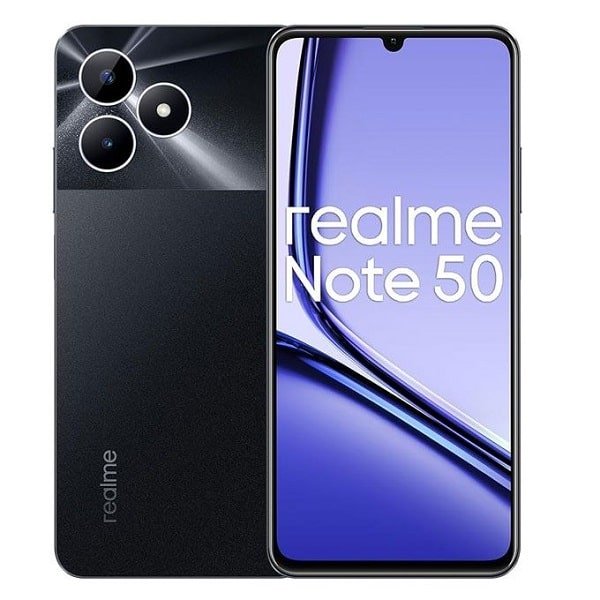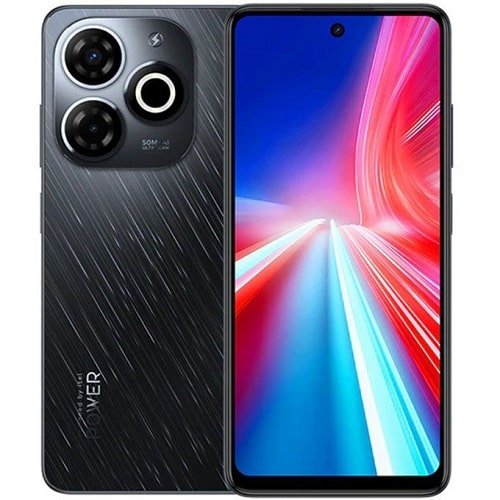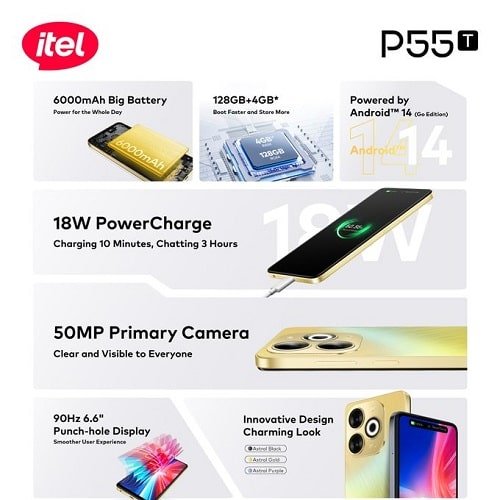Nigeria, as one of Africa’s leading economies, is experiencing rapid growth in technology adoption, and at the center of this revolution are ICT (Information and Communication Technology) gadgets. These gadgets are playing a crucial role in enhancing communication, improving access to education, boosting entrepreneurship, and driving overall economic development in the country.
Today, we are going to discuss about ICT gadgets, focusing on their relevance to Nigerians. From mobile phones to smart devices, these tools are transforming the way people live, learn, and conduct business across Nigeria. Whether you’re a student, a professional, or an entrepreneur, understanding the importance of ICT gadgets can help you navigate and excel in the modern digital age.
What Are the ICT Gadgets?
ICT gadgets refer to electronic devices that enable the collection, storage, processing, and transmission of information. They are used in various sectors such as education, business, healthcare, and entertainment. These gadgets include smartphones, tablets, laptops, smartwatches, and IoT devices, among others. In Nigeria, where mobile internet penetration is growing rapidly, these gadgets are essential for staying connected, conducting transactions, and accessing online services.
20 Popular ICT Gadgets in Nigeria
Here is a comprehensive list of ICT (Information and Communication Technology) gadgets and their uses that you should know about.
1. Smartphones
Smartphones are versatile devices that enable communication through calls, messaging, and video chats, provide internet access, support mobile apps for productivity, entertainment, and social media, and facilitate mobile payments.
Uses:
- Communication: Enables voice calls, video calls, and instant messaging through apps like WhatsApp, Telegram, and Facebook Messenger.
- Internet Access: Provides mobile internet for browsing, online shopping, and social media engagement.
- Mobile Banking: Allows access to banking services, making transfers and payments via mobile apps like GTBank, Zenith Bank, and Opay.
- Entertainment: Supports streaming of videos, music, and social media.
- Mobile Payments: Facilitates cashless transactions using apps like Paga and Paystack.
2. Laptops
Laptops are portable computers used for work, education, and entertainment, offering powerful processing for tasks like document creation, graphic design, video editing, and gaming, as well as internet browsing and communication.
Uses:
- Work and Productivity: Ideal for tasks like document creation, graphic design, video editing, and software development.
- E-learning: Students use laptops for virtual classrooms, assignments, and research.
- Business Management: Essential for managing inventory, processing payments, and analyzing data.
- Entertainment: Used for gaming, streaming movies, and music.
3. Tablets
Tablets are portable touchscreen devices that combine the functionality of a smartphone and a laptop. Ideal for on-the-go productivity, they are used for web browsing, e-learning, watching videos, and reading e-books. Tablets support various apps for work, education, and entertainment, making them versatile tools for both personal and professional use.
Uses:
- E-learning: Popular among students and schools for digital learning, note-taking, and educational apps.
- Portable Work Tool: Ideal for professionals on the go to manage emails, presentations, and documents.
- Multimedia Consumption: Great for watching videos, reading e-books, and accessing social media.
4. Smartwatches
Smartwatches are wearable devices that combine fitness tracking with smartphone integration. They monitor health metrics like heart rate, steps, and sleep, while also delivering notifications for calls, messages, and apps. With features such as GPS, music control, and hands-free calling, smartwatches enhance both daily productivity and personal fitness goals.
Uses:
- Health Monitoring: Tracks heart rate, sleep patterns, and physical activity.
- Notifications: Provides notifications for messages, calls, and emails directly on the wrist.
- Fitness Tracking: Tracks steps, distance, and calories burned for fitness enthusiasts.
5. Wi-Fi Routers
Wi-Fi routers are devices that provide wireless internet access by distributing a broadband connection to multiple devices, including smartphones, laptops, and smart home gadgets. They enable seamless connectivity for streaming, online gaming, remote work, and browsing across homes and businesses.
Uses:
- Internet Connectivity: Enables multiple devices to connect to the internet wirelessly in homes and businesses.
- Remote Work: Essential for seamless internet access for remote workers and online learning.
6. USB Modems (Dongles)
USB modems, or dongles, are portable devices that provide internet access by connecting to a laptop or computer via a USB port. They offer mobile data connectivity, enabling users to access the internet on the go, ideal for remote work and travel.
Uses:
- Portable Internet Access: Provides mobile internet by connecting to a laptop or computer.
- Backup Internet: Acts as an alternative for unreliable Wi-Fi connections, especially in rural areas.
7. Power Banks
Power banks are portable chargers used to recharge smartphones, tablets, and other electronic devices without a direct power source. They are essential for emergencies, travel, and outdoor activities, providing backup battery power when electricity is unavailable or during extended periods without access to charging outlets.
Uses:
- Portable Charging: Charges smartphones, tablets, and other devices when there is no access to electricity, especially during power outages.
- Emergency Backup: Provides essential battery life for gadgets during travels or emergencies.
8. Bluetooth Speakers
Bluetooth speakers are wireless audio devices that connect to smartphones, tablets, or laptops via Bluetooth technology. They provide high-quality sound for music, podcasts, and calls without the need for cables. Portable and convenient, they are perfect for outdoor events, travel, or home entertainment.
Uses:
- Entertainment: Used to play music, podcasts, or audio from smartphones, laptops, and tablets.
- Portable Audio Solutions: Provides convenient audio solutions for gatherings, parties, and events.
9. Headphones and Earbuds
Headphones and earbuds are audio devices designed for personal listening, delivering high-quality sound for music, podcasts, and calls. Headphones offer immersive sound with noise-canceling options, while earbuds are compact and portable, often featuring wireless connectivity. Both are ideal for hands-free communication, gaming, workouts, and entertainment on the go
Uses:
- Music Listening: Offers immersive sound experience for music, podcasts, and calls.
- Communication: Used for hands-free calls and virtual meetings.
- Gaming: Gamers use them for an enhanced audio experience during gameplay.
10. POS Systems
POS (Point of Sale) systems are integrated solutions that facilitate sales transactions in retail and service environments. They combine hardware and software to process payments, manage inventory, and generate sales reports. In Nigeria, POS systems enable cashless transactions, streamline business operations, and enhance customer service, making them essential for modern commerce.
Uses:
- Payment Processing: Allows businesses to accept debit and credit card payments, making transactions easier for customers.
- Mobile Banking: POS agents provide cash withdrawal and deposit services, especially in areas with limited banking facilities.
11. Smart TVs
Smart TVs are advanced television sets that connect to the internet, allowing users to stream content from platforms like Netflix, YouTube, and local services. They offer interactive features, app support, and voice control, transforming traditional viewing experiences into versatile entertainment hubs for movies, shows, gaming, and online browsing.
Uses:
- Entertainment: Connects to the internet for streaming services like Netflix, YouTube, and local platforms such as IrokoTV.
- Apps: Supports apps for gaming, news, and social media.
- Mirror Devices: Allows casting from smartphones or tablets to the TV for a larger viewing experience.
12. CCTV Cameras
CCTV cameras are surveillance devices used to monitor and record activities in various environments, enhancing security for homes, businesses, and public spaces. They provide real-time video footage, which can be accessed remotely, helping to deter crime, ensure safety, and facilitate investigations by capturing essential evidence when needed.
Uses:
- Security: Monitors homes, businesses, and public spaces for safety and surveillance.
- Remote Monitoring: Allows users to access live footage from their smartphones or computers.
13. Smart Home Devices
Smart home devices are connected gadgets that automate and control various aspects of home life, enhancing convenience and security. They include smart lights, thermostats, locks, and security cameras, all of which can be managed remotely via smartphone apps or voice commands. These devices promote energy efficiency and streamline daily routines.
Uses:
- Home Automation: Controls lighting, appliances, and security systems remotely through mobile apps.
- Voice Assistants: Devices like Google Home and Amazon Alexa provide voice-activated control over smart home gadgets.
14. External Hard Drives and USB Flash Drives
External hard drives and USB flash drives are portable storage devices used for data backup and transfer. External hard drives offer substantial capacity for storing large files, while USB flash drives provide convenient, pocket-sized storage for quick file access. Both are essential for safeguarding important documents, media, and digital content
Uses:
- Data Storage: Used to store, back up, and transfer files between devices.
- Portable File Access: Enables users to carry large amounts of data for access on different computers.
15. VR Headsets
VR (Virtual Reality) headsets are immersive devices that transport users into digital environments, offering interactive experiences for gaming, training, and virtual tours. They use advanced graphics and motion tracking to create lifelike simulations, making them ideal for entertainment, education, and professional applications in fields like architecture and healthcare.
Uses:
- Virtual Reality Experiences: Provides immersive experiences for gaming, virtual tours, and training simulations.
- Education and Training: Used in e-learning for interactive lessons and in industries like engineering and medicine for simulations.
16. Printers and Scanners
Printers and scanners are essential devices for document management in homes and offices. Printers produce physical copies of digital files, including documents and photos, while scanners convert physical documents into digital formats for easy storage and sharing. Together, they enhance productivity and streamline workflows for various professional and personal tasks.
Uses:
- Document Printing: Used by businesses, schools, and individuals for printing contracts, assignments, and other documents.
- Digitalization: Scanners convert physical documents into digital formats for storage and sharing.
17. Drones
Drones are unmanned aerial vehicles equipped with cameras and sensors, used for capturing high-quality aerial photography, videography, and data collection. They are valuable in various fields, including agriculture, construction, and surveillance, offering unique perspectives and enhancing efficiency in monitoring and analysis.
Uses:
- Aerial Photography: Used by photographers, filmmakers, and surveyors for capturing images and videos from above.
- Surveillance and Security: Helps in monitoring large areas and providing aerial surveillance for security purposes.
18. IoT Devices (Internet of Things)
IoT devices are interconnected gadgets that communicate and share data over the internet, enhancing automation and efficiency in daily life. Examples include smart home appliances, wearable fitness trackers, and industrial sensors. They enable real-time monitoring and control, improving convenience, productivity, and decision-making across various applications.
Uses:
- Home Automation: Devices like smart lights, thermostats, and security systems are controlled via smartphone apps.
- Business Efficiency: Used in industries like agriculture and manufacturing to track data and automate processes.
19. Smart Glasses
Smart glasses are wearable devices that integrate augmented reality (AR) and digital information into the user's field of vision. They enhance everyday experiences by providing hands-free access to notifications, navigation, and real-time data. Ideal for professionals in fields like healthcare and logistics, smart glasses improve efficiency and connectivity while on the move.
Uses:
- Augmented Reality: Enhances real-world environments with digital information for gaming, training, or navigation.
- Hands-Free Control: Allows users to view and interact with digital content without using their hands, ideal for professionals working in challenging environments.
20. Document Cameras
Document cameras are versatile imaging devices used to display and project documents, images, or real-time objects onto screens or interactive whiteboards. Ideal for classrooms and presentations, they facilitate interactive learning and collaboration by allowing educators and presenters to share content seamlessly, enhancing engagement and understanding during discussions and demonstrations.
Uses:
- Education: Helps teachers project documents or real-time objects onto a larger screen during presentations or online lessons.
- Workplace Presentations: Used in meetings for real-time demonstrations of documents and physical objects.
Importance of ICT Gadgets in Nigeria
Enhancing Communication
Communication is key to both personal and professional life, and ICT gadgets like smartphones, tablets, and laptops have transformed how Nigerians interact. With mobile phones becoming increasingly affordable, a large portion of the Nigerian population now has access to tools that enable instant messaging, video calls, and social media engagement. The rise of 4G and the anticipated rollout of 5G networks are further enhancing this communication landscape.
Popular apps like WhatsApp, Telegram, and Zoom, which are optimized for mobile devices, are widely used across Nigeria for both personal communication and business meetings. ICT gadgets have reduced the barriers to communication, enabling people in remote areas to connect with family, friends, and colleagues around the world in real time.
Boosting Business and Entrepreneurship
ICT gadgets are transforming Nigeria's business landscape, particularly in the areas of e-commerce, digital marketing, and remote work. Entrepreneurs and small businesses are leveraging mobile devices to reach customers via social media platforms such as Instagram, Facebook, and Twitter. With smartphones, entrepreneurs can set up online stores, manage transactions, and communicate with customers without the need for expensive physical offices.
Additionally, business owners can use laptops and tablets to manage inventory, track sales, and analyze customer data. For example, Point of Sale (POS) systems, which are often connected to mobile devices, allow small businesses to offer digital payment options, making it easier for customers to make purchases. This is particularly important in a country like Nigeria, where cashless transactions are becoming more popular.
Improving Access to Education
Education in Nigeria has been significantly impacted by the availability of ICT gadgets. With the rise of e-learning platforms and online courses, students and educators alike rely on gadgets such as laptops, tablets, and smartphones to access educational materials. Many Nigerian students are now able to participate in virtual classrooms, complete online assignments, and take part in distance learning programs.
Mobile phones with internet access also allow students to conduct research, watch educational videos, and collaborate on projects with peers. This has proven to be especially important in times of disruption, such as during the COVID-19 pandemic, where traditional schooling was limited. ICT gadgets have made learning more accessible, breaking down geographical barriers and providing students with a wealth of resources at their fingertips.
Enhancing Healthcare Services
The healthcare sector in Nigeria is also benefiting from the use of ICT gadgets. Telemedicine, for instance, is growing in popularity as doctors use smartphones and tablets to provide remote consultations. Patients can now schedule appointments, receive diagnoses, and even get prescriptions through mobile apps, reducing the need for physical visits to healthcare facilities.
Moreover, ICT gadgets enable the digitalization of medical records, making it easier for healthcare providers to manage patient information and improve the quality of care. Wearable health gadgets, such as smartwatches that monitor heart rates and track fitness levels, are also gaining traction in Nigeria. These devices allow individuals to take control of their health and receive real-time feedback on their physical well-being.
Driving Entertainment and Media Consumption
Nigeria’s vibrant entertainment industry, particularly in music, movies, and online media, is thriving thanks to ICT gadgets. Smartphones, tablets, and smart TVs are widely used by Nigerians to stream content from platforms like YouTube, Netflix, and local streaming services like IrokoTV.
Nigerian artists, filmmakers, and content creators are leveraging ICT gadgets to produce, distribute, and market their work to a global audience. Social media platforms and mobile apps allow them to engage with fans, promote their work, and generate income through monetization options like YouTube ads and sponsored content.
ICT gadgets have also made it easier for Nigerians to create and consume entertainment content, contributing to the growth of the country's creative industry, which is a significant part of its economy.
Challenges Facing ICT Gadgets Adoption in Nigeria
While ICT gadgets are transforming Nigeria in many ways, there are still challenges to widespread adoption, particularly in rural areas. These include:
High Cost of Devices
Although the price of smartphones and other gadgets has decreased in recent years, many Nigerians still find it difficult to afford high-end devices. This can limit access to advanced features and services that come with premium gadgets.
Internet Connectivity Issues
While mobile internet is widely available in urban areas, many rural parts of Nigeria still suffer from poor network coverage and slow internet speeds. This limits the ability of rural communities to fully benefit from ICT gadgets and the digital economy.
Power Supply Problems
A reliable power supply is essential for the use of ICT gadgets, but many parts of Nigeria experience frequent power outages. This can be a significant barrier to the continuous use of these devices, particularly for businesses that rely on them for daily operations.
Digital Literacy
Many Nigerians, especially in rural areas, still lack the digital literacy needed to effectively use ICT gadgets. Education and training programs are needed to teach people how to use these tools to their full potential.
The Future of ICT Gadgets in Nigeria
As Nigeria continues to develop its digital infrastructure, ICT gadgets will play an increasingly important role in driving the country’s economic growth and improving the quality of life for its citizens. From smartphones that connect people across long distances to advanced IoT devices that optimize business processes, these gadgets are at the heart of Nigeria’s digital transformation.
For individuals and businesses alike, investing in ICT gadgets can open up new opportunities for communication, education, and economic growth. As technology continues to evolve, Nigerians will be able to harness the power of ICT gadgets to build a more connected, productive, and prosperous future.
Also Read•
How Smart TVs and Streaming Devices Opened the Door to Digital Entertainment•
A Comprehensive Guide to Smart Home and Home Automation
 Recent Posts
Recent Posts





